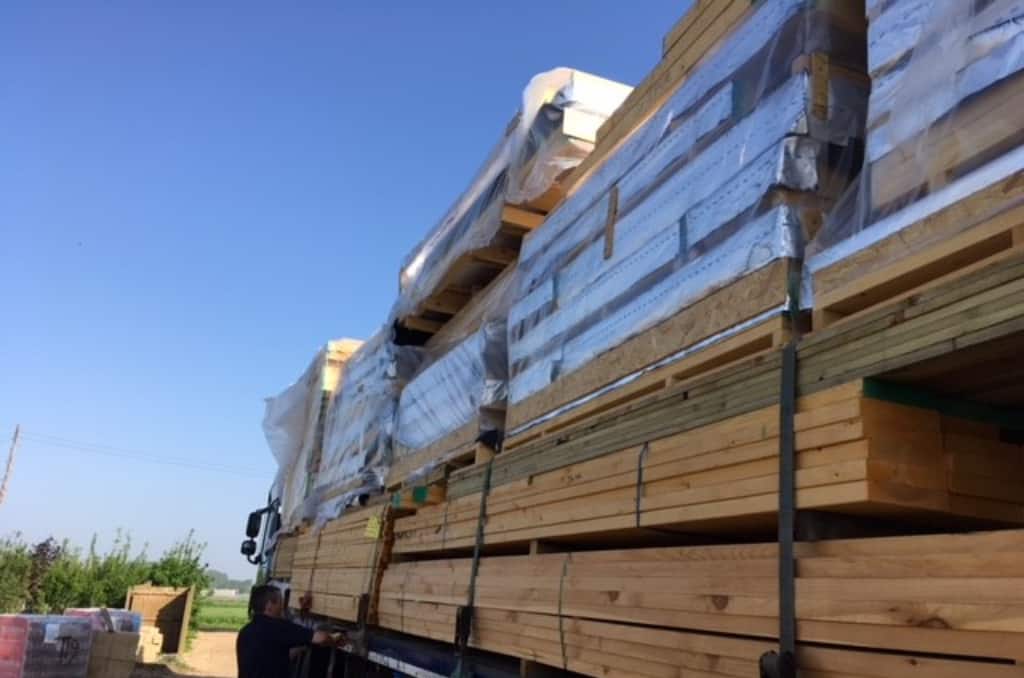Is timber frame the same as a pre-fab?

What does Pre-Fabrication mean?
The definition of pre-fabrication is to ‘manufacture sections of a building to enable quick assembly on site’. In this respect, yes, timber frame is pre-fabricated; however, depending on your age the word pre-fab can mean something different.
Historic Pre-Fabrication
As a child of the 70s, I immediately think of visiting a friend of my Nan’s who lived in a prefab at Newington Butts, Kennington; a humble single-storey bungalow erected in response to Britain’s housing crisis after World War II. It had a distinctly temporary feel and clearly wasn’t intended to stand for as long as it eventually did. In times of crisis, temporary solutions often come to the fore. Look no further than the decline of high street retail and you witness the rise of the ‘pop-up’ shop. The now ubiquitous pop-up has filled every gap from creating lifelines in war-torn provinces to satisfying the palate of the gourmand in search of their next fashionable meal. However, pre-fabricated homes today, while quick to erect (and, like the pop-up, may well seem to appear from nowhere) are most definitely not temporary.
Modern Day Pre-Fabrication
As a structural system, one of the huge advantages of timber frame construction is the fact that a home can be pre-fabricated within a factory environment; the panels that form the structural elements of the dwelling are constructed in a manufacturing plant and then transported to site to be assembled. Offsite manufacture allows for controlled, precision engineering meaning timber frame can be produced to exacting standards and in line with quality assurance procedures. Compared with something like stick building (where a joiner will build the timber frame on-site) the self-builder can be assured of the quality of the product before it arrives on site. Additionally, a factory environment lends itself to increased control of materials meaning less waste (and more savings). Pre-fabrication also enables the speed of erection timber frame has become known for, allowing a 200m2, two-storey, 4-bedroom home to be erected to the wind and watertight stage in approx. 2 weeks.
When Churchill announced the UK’s temporary housing programme in 1944 it was officially known as the Emergency Factory Made (EMF) housing programme. Like today’s timber frame, EMF houses used off-site construction, making both pre-fabricated; however, the differentiating factor is that timber frame is designed and built to stand the test of time.
Article Archives
- 18 November Securing land for self and custom build
- 04 September Raising Funds For a Community Defibrillator
- 31 January Get Started with your Self-Build Design
- 11 October Making self-build more straightforward
- 13 March NSBRC Building Systems Workshop
- 03 March Self-Build Pre Planning Advice
- 07 December External Wall Build Ups Explained
- 19 October NaCSBA’s Custom and Self Build Conference
- 22 September Our Saltire Scholar 2022
- 21 September Planning permission explained
- 23 August Fundraising for Marie Curie
- 17 August Carbon Capture and Storage
- 15 March The Case for Project Management
- 03 February Financing your self-build with a mortgage
- 15 October Custom Build Collaboration for West Cumbria
- 17 March Tackling timber frame terminology
- 06 October Exhibitors and experts line up at the NSBRC
- 26 March Tips for working from home
- 16 November Top Tips When Planning Your Build
- 25 September Is timber frame the same as a pre-fab?
- 09 April Boost Your Self-Build Knowledge
- 08 February Can a timber frame home stand the test of time?
- 15 January Self-build mortgages: what you need to know
- 23 February Cut on-site costs with FIT pre-insulated panels
- 03 January Bespoke self-build checklist
- 07 November Custom build vs self-build
- 07 April The three timber frame build routes
- 10 August A Scottish model for an English market
- 18 September 3 essentials for self-build success

